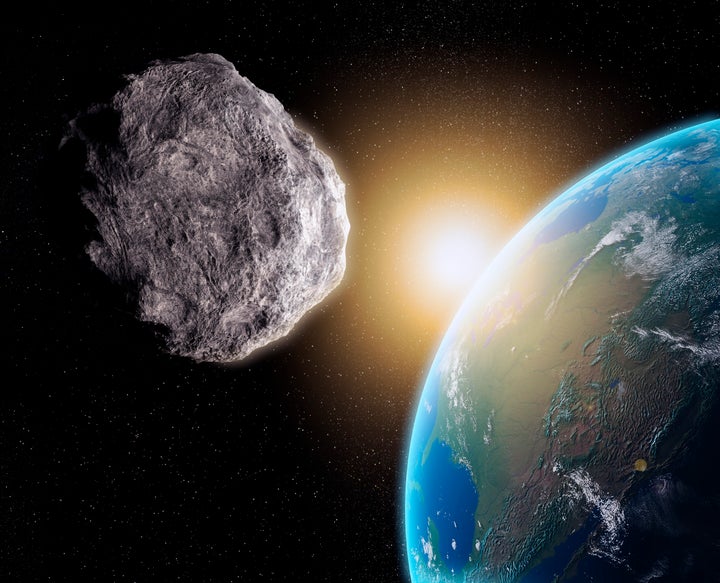If the human race doesn’t manage to successfully destroy itself without help, don’t worry because our fragile planet is constantly being swarmed by giant fireballs which could wipe us all the face of the earth in a second anyway.
But if devastating armageddon isn’t quite what you had in mind for 2017, then you’ll be thankful that the smart people at NASA have got their thinking caps and are working to keep us safe.
NASA’s Centre for Near-Earth Object Studies (CNEOS) is an initiative that monitors the skies for threats that could potentially collide with earth in the next one hundred years.

What are near-earth-objects?
Near Earth Objects (NEO) are comets and asteroids that have been nudged by the gravitational attraction of nearby planets into orbits that allow them to enter the earth’s neighbourhood.
They are predominantly composed of water and ice embedded with dust particles, and are the bits and pieces left over from the initial agglomeration of the inner planets that include Mercury, Venus, Earth and Mars.
Why are these objects a problem for humans?
Now while we don’t mind these objects floating around in our atmosphere, if a large fireball is on a trajectory towards our major cities, it would be good to have some advanced warning.
In 2013, the Chelyabinsk meteor in Russia, injured over 1000 people and smashed all windows and buildings in a nearby radius, when it made contact.
What is the Near-Earth Object program?
In 1998 NASA established the NASA’s Centre for Near-Earth Object Studies (CNEOS) with a goal to discover 90% of these near earth objects flying through space that measured larger than one kilometer in diameter – those that posed the maximum potential threat if they collided with our planet.
But in 2005 the American congress extended that to locating 90% of objects that were larger than 140m across – vastly increasing the potential threats to watch out for.
It is thought that this increased the number from approximately 1,000 to 15,000, proving just how vital the program had become.

So how does NASA see these asteroids out in space?
Early efforts back in the nineties to discover near earth objects relied upon the comparison of photographic films of the same region of sky taken several minutes apart.
The pictures would then be viewed through a ‘blink comparator’, which would show the galaxies and stars in the same position, but any potential threatening object would ‘jump’ across the picture as it moved through space.
Now scientists use a ‘charged couple device’ – a camera, which record images digitally – it is a similar system to the photograph that works on the premise of seeing things move across the sky.
How do they know if one asteroid poses a threat to earth?
With as many as 15,000 asteroids as potential candidates, they can’t all be considered a priority. So when the team discover a new asteroid they are looking for the location, the direction it appears to be travelling in and it’s brightness to see how close it is to the earth.
What do NASA do if they think an asteroid is heading our way?
If the worst case scenario seems to be unfolding, NASA keep monitoring the asteroid at closer range, because they normally do end up deviating off the path.
However, if the asteroid is locked in to earth, NASA’s main aim will be to coordinate an intergovernmental effort to intervene with the asteroid.
If an intervention is not possible, the space agency will work with the emergency response teams in the USA — Federal Emergency Management Agency (FEMA) — to work out impact timing and locations. And the agency says the same courtesy will be given to international counterparts.
How successful has the program been?
According to NASA, more than 13,500 near-Earth objects (NEOs) have been detected and 95% of them have been identified as a result of surveys funded by the space agency.
They claim to have found 90% of the objects over a kilometre in diameter and a good fraction of the smaller ones.
Keep up the good work NASA.
